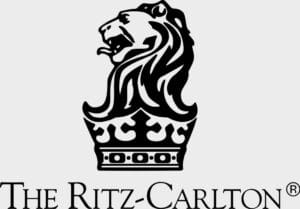Building Trust in the Digital Age
Marketing is the lifeline that connects businesses to consumers. In today’s world, the approach to marketing has shifted dramatically, and so has the associated cost. While big names might have the budget to pour into expansive campaigns, marketing on a shoestring budget is the stark reality for many small to medium-sized businesses. However, with innovative strategies like guerrilla marketing, user-generated content campaigns, and leveraging social media influencers, businesses can still make a considerable impact without breaking the bank.
The New Frontier of Marketing
In today’s digital landscape, your online reputation is not just a part of your brand; it is the cornerstone of how customers perceive and interact with your business. With the proliferation of social media, review platforms, and online forums, managing your online reputation has become an essential, ongoing conversation between businesses and consumers. It’s a dynamic process where companies can build trust, loyalty, and a formidable online presence.
Why It’s Essential
An effectively managed online reputation allows businesses to connect with customers on a personal level. This engagement is crucial for several reasons:
- Building Relationships: Regular interactions with customers foster a sense of community and loyalty.
- Insight Gathering: Customer feedback is a goldmine for understanding market needs and improving products or services.
- Crisis Management: Quick and thoughtful responses to negative incidents can mitigate damage to your brand’s reputation.
Key Elements for Effective Management
- Comprehensive Monitoring: Keep an eye not just on review sites, but also on social media mentions, blog posts, and news articles. Tools like Google Alerts, Mention, or Hootsuite can be invaluable for this.
- Authentic Engagement: Personalize your responses. Generic replies can sometimes do more harm than good.
- Encouraging Positive Sharing: Incentivize happy customers to share their experiences online. This could be through loyalty programs or exclusive offers.
- Handling Criticism Professionally: Negative feedback should be tackled with empathy and a willingness to resolve the issue. Sometimes a well-handled complaint can turn a dissatisfied customer into a loyal one.
According to an Inc.com research study, an estimated 84% of people trust online reviews as much as a personal recommendation.
According to a Qualtrics study completed in 2020, 91% of 18-34-year-olds trust online reviews as much as personal recommendations.
Strategies to Leverage Customer Feedback
- Utilize Customer Feedback Surveys: Regularly deploy targeted surveys to gather more structured feedback. This approach can help identify specific areas of improvement and gauge overall customer satisfaction. Use platforms like SurveyMonkey or Google Forms for easy distribution and analysis.
- Create a Community Forum: Establish a platform where customers can interact, share experiences, and provide feedback. This forum not only serves as a feedback tool but also fosters a community around your brand, enhancing customer loyalty.
- Implement Review Mining: Analyze online reviews using AI tools to extract insights and trends. This can help understand the broader customer sentiment and identify common themes in feedback.
- Incorporate Feedback in Product Development: Show your customers that their opinions matter by integrating their suggestions into product or service updates. Sharing these developments on your platforms can boost customer engagement and loyalty
- Leverage Social Listening Tools: Use tools like Brandwatch or Sprout Social to monitor what customers are saying about your brand across different social media platforms. This real-time feedback can be invaluable for immediate response and long-term strategy development.
- Use Feedback for Personalized Marketing: Tailor your marketing efforts based on customer feedback. This personalization can significantly enhance customer experience and brand perception.
- Develop a Reputation Recovery Plan: In cases of negative feedback, have a clear plan in place to address and resolve the issue. This plan should include steps for communicating with the customer and rectifying the situation.
- Spotlight Customer Reviews in Marketing Materials: Feature positive reviews prominently on your website and in marketing campaigns. Authentic customer testimonials can be powerful in building trust with potential customers.
- Regularly Share Feedback Internally: Ensure that customer feedback is shared with all relevant departments. This helps in aligning various aspects of your business with customer needs and expectations.
Real-World Examples of Success
Fun Fact
Negative reviews can reduce the number of applicants a company receives by up to 22%, according to a LinkedIn recruitment agency study.
Ritz-Carlton

This luxury hotel chain goes beyond just responding to online reviews; it uses customer feedback to improve its services, thereby enhancing its reputation for excellence.
Zappos

This company is renowned for its customer service and regularly uses customer feedback to enhance its service offerings. They actively involve customers in decision-making processes, showing that they truly value customer input.
Warby Parker

This eyewear company is known for its exceptional customer service on social media, often going above and beyond in addressing customer concerns.
Amazon

Despite its size, Amazon has maintained a strong reputation for customer service, largely through its efficient response system and customer-centric return policies.
Slack

The messaging platform actively uses customer feedback to refine its product. They maintain transparency about how customer input shapes their product updates, fostering a sense of community and shared development.
JetBlue Airways

Known for its customer service, JetBlue actively engages with customers on Twitter, often responding to queries and concerns within minutes.
Businesses that reply to their reviews at least 25% of the time average 35% more revenue, according to a recent 2020 study from GatherUp.
Responding to reviews can lead to an average rating increase of 0.12 stars, according to a Harvard business study.
Maintaining a Positive Brand Image Online
- Unified Brand Voice and Visual Identity: It’s crucial to maintain a consistent brand voice and visual identity across all online platforms. This uniformity helps in reinforcing brand recognition and trust. Ensure your website, social media profiles, and all digital communications reflect your brand’s tone, style, and values.
- Strategic Content Creation: Invest in creating high-quality, engaging content that aligns with your brand’s messaging. This can include educational blog posts, informative videos, and eye-catching graphics that provide value to your audience. Regularly update your digital platforms with engaging, relevant content. This can include blog posts, videos, or infographics that align with your brand values and appeal to your target audience. Remember, content that resonates with your audience will more likely be shared, increasing your brand’s visibility.
- Employee Engagement and Training: Employees can be your best brand ambassadors. Encourage them to share your content and engage with your brand online. However, it’s also important to provide them with proper training on how to represent your brand on social media to avoid any potential mishaps.
- Leveraging Customer Testimonials: Showcase customer testimonials prominently on your website and social media. These testimonials act as social proof and can significantly influence potential customers.
- Active Social Media Management: Regularly post on your social media channels and engage with your audience. Respond to comments, share relevant industry news, and create interactive content like polls or Q&A sessions to keep your audience engaged.
- Monitoring Brand Mentions: Use tools to monitor when your brand is mentioned online. This allows you to quickly respond to any mentions, whether they are positive or negative, and shows that your brand is attentive and responsive
- Crisis Management Plan: Have a crisis management plan in place. In case of a negative incident, having a strategy on how to address it quickly and effectively can prevent long-term damage to your brand’s image.
- Influencer Partnerships: Collaborate with influencers who align with your brand values. These partnerships can amplify your brand’s message and reach a larger audience.
- SEO for Reputation Management: Invest in SEO strategies to ensure that positive content about your brand ranks high on search engine results pages. This includes optimizing your website, publishing quality content, and building backlinks.
- Regular Analysis and Adaptation: Regularly analyze your online presence and adapt your strategies as needed. Use analytics to track the performance of your content, understand audience behavior, and refine your approach accordingly.
Case Study
Starbucks’ “Race Together” campaign, meant to encourage conversations about race, faced significant backlash online, demonstrating how online sentiments can impact brand perception.
In the age of digital interconnectedness, managing your online reputation is not just an option, it’s a necessity. By effectively leveraging strategies like engaging with customer feedback, encouraging positive reviews, and maintaining a consistent brand voice, businesses can navigate the complexities of the digital world to build and maintain trust with their audience. Remember, your online reputation is a dynamic asset that requires ongoing attention and care. As a business owner or marketer, your role in shaping this narrative is vital to your brand’s success in the digital marketplace.

